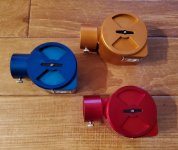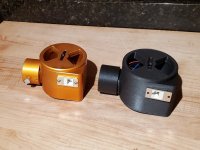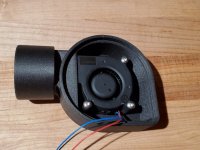Hey Gang!
I have just printed and built one of these
I have a slight issues with my servo/case, in that it won't shut completely at 0% fan.
I have tried adjusting the servo. But as soon as it is powered up, it jumps 'open' again.
Made we wonder if it was designed to be slightly open at all times
Thanks
Aaron
I have just printed and built one of these
I have a slight issues with my servo/case, in that it won't shut completely at 0% fan.
I have tried adjusting the servo. But as soon as it is powered up, it jumps 'open' again.
Made we wonder if it was designed to be slightly open at all times
Thanks
Aaron



